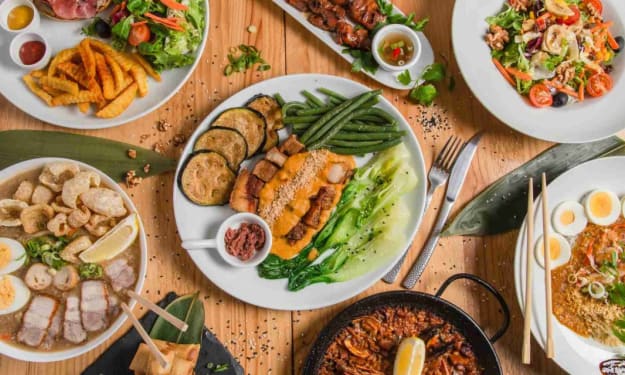Does Organic Translate to Healthy?
Hidden Little Secrets of the Foods We All Love

Have you ever wondered why shredded cheese doesn’t stick to each other in the bag? Or thought about why beef jerky is dried meat, but has a smoky flavor? The food that we are serving and buying may look and taste good, but in reality may not be as healthy as we, the consumers may be thinking it to be. Buyers of many products do not even know what they are necessarily consuming. Perhaps some people are aware, whereas on the other hand some may not even care that much to either know or do anything about it.
There are many definitions as to what organic food necessarily is. The United States Environmental Protection Agency defines organic food as “ food grown and processed using no synthetic fertilizers or pesticides. Pesticides derived from natural sources may also be used in producing organically grown food.” Contrary to that, the Merriam Webster dictionary defines organic as “of, relating to, yielding, or involving the use of food produced with the use of feed or fertilizer of plant or animal origin without employment of chemically formulated fertilizers, growth stimulants, antibiotics, or pesticides.” Alone in these two definitions what can be seen is that both can conclude organic as food production without certain pesticides and fertilizers. Neither, however, discuss how food is truly produced whether it be organic or non-organic foods.
There is a book entitled Is Organic Food Better? edited by Robert D. Lankford. Published in 2011, it is an anthology of different opinions and works regarding food, each taken from various books and periodicals. In the first chapter of the book, there is an article written by Katherine Chen. Chen is a now (since the book has been published) graduate of Princeton University where she majored in English and obtained a certificate of Creative Writing. The chapter Chen composed is called "Organic Food: An Overview." She mentions a 2009 study within her pages. In this investigation, completed in London, England, the results found stated that the majority of consumers who completed the survey and chose organic foods, only purchase(d) the food because in their minds they think it is healthier (Chen). This survey can potentially be eye-opening when it comes to the settling realization in people’s minds that the only reason they are purchasing and consuming this classification of food (being organic) is due to the fact that the consumer exclusively thinks it to be better and healthier. Besides reading books or researching in depth what the differences and possible pros and or cons are of each type of food, there isn’t much the patron buyer can do to learn more. An increased number of films however have been produced and screened such as Super Size Me, Fast Food Nation, and Food Inc.
Food Inc. is a movie that was released in the United States in 2008. This movie shows not only how much the food industry has changed in the past fifty years but how the “face” of food has always been rural farms and their farmers. In the first few minutes of the movie, the narrator (which bounces back and forth between Eric Schlosser and Michael Pollan) says “there are no seasons in the American supermarket.” In my mind alone, this raises a flag. Why had I actually never even really considered this actuality before I sat down and watched this movie? The example Pollan gives is that there are tomatoes all year long, and they come from all around the world. “There are no seasons in the American supermarket. Now there are tomatoes all year round, grown halfway around the world, picked when it was green, and ripened with ethylene gas. Although it looks like a tomato, it's kind of a notional tomato. I mean, it's the idea of a tomato.” If questioned what sounds better, an actual tomato or the “notional idea of a tomato,” you would think people would want the actual fruit, no? Even if this were the case, when people are choosing between organic and non-organic foods, they are essentially answering this question subconsciously (Food Inc.).
Within the movie is the story of a little boy who died due to preventable causes and because of him, a new law was created and enacted. Kevin’s Law is a law that passed in 2001 due to the death of two-year-old Kevin Kowalcyk. In July of 2001, Kevin and his family were taking a vacation when he ate a hamburger containing E- Coli O157:H7; after eating the meat, Kevin contracted hemolytic-uremic syndrome, or HUS. HUS is a condition where the red blood cells of a person are destroyed prematurely and begin to clog the blood-filtering system of the kidneys. Some of the meat from the company that produced the meat Kevin ate was recalled the following August. In December 2000, when given a random E-Coli test, the meat plant had failed for the second time, resulting in 1.1 million pounds of meat to be recalled. In July 2001, when Kevin was infected, there was an outbreak of E-Coli in Illinois, mainly in Chicago. When researched further, the meat was found to have come from the same meat plant that took the life of the little boy. Looking at this in the larger scheme of things, in the event that the meat industry had produced the contaminated meat had taken a deeper look at their products, would this have happened? (CFI)
In more recent stories within the past few years, Craig Watts, a chicken farmer from North Carolina, decided to speak up and let the consumers see the truth about Perdue farms. He is a manufacturer of over 700,000 of the chickens (per year) sent to the farms. Watts has been cultivating and raising these animals for over twenty years and has been following the Perdue guidelines of how to treat the chickens and what the proper upbringing of the chickens is. Watts and the company left the consumers in the dark of how they treat the soon to be food that is placed on supermarket shelves. Until Watts allowed Compassion for World Farming, an animal welfare group, to see the truth, the buyers have been allowed to believe that the food was “humanely raised” as said on food packaging (Ferdman). Contrary to what may be labeled on the packaging, when allowed insight on the ways the chickens are brought up, the first evidently wrongful thing was how the chickens themselves looked. The chickens in the video that was recently released all appear to be ill and mistreated. Their breasts are so enlarged that they end up spending disproportionate amounts of time squatting to relieve their legs. The birds also appeared to be limping, and when tested, had heart and lung problems as well. However, this is not far off from how many chicken farms that are connected to major poultry exports treat their chickens as well. Each farm can be see as having “the birds [are] confined to a space smaller than a square foot, and frequently spend(ing) their entire lives atop mounds of feces. The result is that many birds die within the first six weeks.”
The United States Department of Agriculture (USDA) and the Food and Drug Administration (FDA) created and implemented rules, regulations, and guidelines for food were executed over a hundred years ago. Many of the decorums constructed have not been changed or altered in the slightest. This raises a warning to many with an impotent fear that the system for food safety in the United States is failing with each passing year. Within her article, DeWaal brings up an eye-opening concept when she voices that “following September 11, 2001, security at U.S. airports was centralized under the Department of Homeland Security. Notably, however, the most frequent traveler across U.S. borders—imported food—is still under the supervision of a bifurcated federal system of food regulation.” De Waal shares that the only true way for this to get changed in the slightest is to alternate the ways inspecting the foods. While the way itself of inspecting food needs to be changed, the organizations doing the inspections need to be looked at as well (De Waal). The USDA looks at and oversees all poultry, meat, and some processed egg products. The FDA, on the other hand, safeguards all food that is not covered by the USDA.
Can the idealized concept behind organic and inorganic foods be concluded into two categories of people? Group A chooses not to learn about the hidden factors within the food they are allowing to enter their bodies; and Group B knows all about it and does it anyways. Could there always be the option of a Group C of people who really, just don’t care and all that matters is that the food is edible and can suffice their hunger for the time being? Does knowing what is in food, but not being able to tell, change people’s outlook? Is knowing that cellulose, which is derived from wood pulp and cotton, is added to our shredded cheese so it doesn’t stick to each other weird? Or is it that propylene glycol, a chemical found in anti-freeze, found in the lubricant in condoms and is toxic to dogs, is also found within our sodas, salad dressings and beers we are drinking? Maybe one day in the hopefully near future, food can be made solely out of edible things and not things contracted from other things.
About the Creator
Natalie Santana
Sleep deprived mom of a five year old. Hopeless romantic. Will eat any food placed in front of me. Knower of useless facts. If there's a dog, I'm probably petting it.






Comments
There are no comments for this story
Be the first to respond and start the conversation.